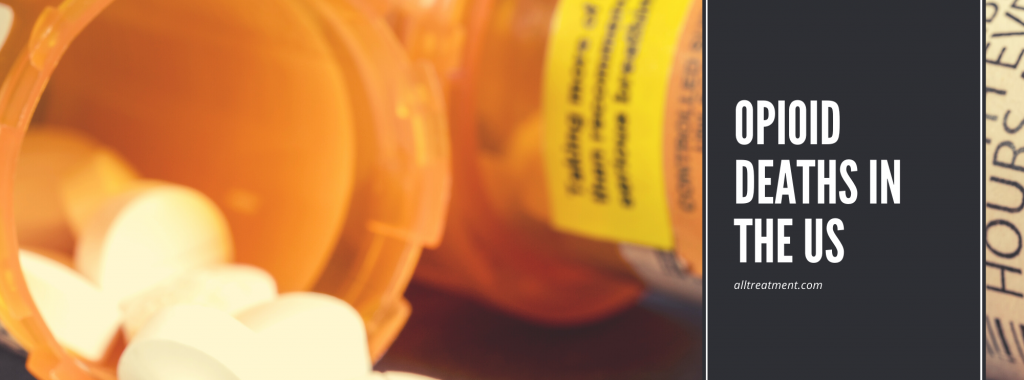Are We Underestimating the True Number of Opioid Deaths in the US?

May 14th, 2020
The massive scope of the opioid epidemic is difficult to comprehend. In 2018, according to government statistics, more than 69,029 people died from an opioid overdose. That’s approximately 189 people per day. Although that number is shocking, what if the total is actually higher than that? Due to inaccurate tracking and reporting methods, it’s possible that the true number of opioid deaths could be about 28 percent higher.
Currently, the US is in the third phase of the opioid crisis which involves the increased availability of synthetic opioids like fentanyl and carfentanil. The first phase involved prescription opioids as the cause of death. The second phase of the epidemic involved increased heroin use as the cause of death.
As a result of the substantial rise in opioid overdose deaths, the federal government has initiated improved strategies to combat the epidemic. These strategies include:
- Expand access to treatment and medications such as Naloxone.
- Collect more accurate data regarding opioid deaths.
- Allocate federal funding to areas with the highest rates of opioid mortality.
These efforts are crucial to bringing down the true number of opioid deaths in America. However, without accurate information, it will be impossible to address the problem effectively.
Issues Involved with Documenting Opioid Overdoses
Underreporting or misrepresentation of opioid-related deaths is the result of a combination of factors. One of those factors has to do with the way medical examiners or coroners report the cause of death on death certificates. For instance, according to NCBI, states with medical examiner systems rather than a decentralized coroner system had a higher percentage (92%) of specified drugs on the death certificates.
The certificates may contain inaccurate or missing information that can downplay the extent of opioid involvement. For instance, in a recent study, researchers found that in more than 20 percent of cases, the type of drug could not be specified.
In their search to determine the real causes of death among the unspecified cases, the research team discovered inconsistencies in the way deaths are tracked in the US. Further investigation by the researchers showed that about 71.8 percent of “unspecified” overdose deaths were from opioids. That translates into more than 99,160 unreported opioid-related deaths.
Other Under-Reported Consequences of Opioid Abuse
Overdose mortality rates are a major concern, however, the epidemic fosters a variety of consequences other than death. These under-reported consequences extend to adversely affect innocent people in a number of ways. For instance:
- Addicts can contract infectious diseases and spread them to others.
- The rate of newborns with neonatal abstinence syndrome (NAS) is increasing.
- The number of children in foster care due to addicted parents is on the rise.
- The areas of the US with the higher overdose rates also have the highest number of children placed into foster care.
As the opioid epidemic showed no sign of abating, President Trump declared a public health emergency in 2017. The President’s Commission on Combating Drug Addiction and the Opioid Crisis was formed to address the epidemic. The act includes recommendations to screen, prevent, and treat substance use disorders, and expand treatment programs.
Furthermore, the cost incurred by the federal government stemming from the opioid epidemic is also underreported. Most Americans are unaware of the massive amounts of money the government spends trying to address the opioid crisis. Below is a breakdown of drug-related expenditures for the fiscal year 2018:
Treatment and Recovery | $2,115,574,000 |
Prevention | $1,684,442,800 |
Mixed: Treatment/Prevention/Recovery | $1,903,103,200 |
| Criminal Justice | $ 532,639,484 |
| Law Enforcement | $ 312,000,000 |
| Interdiction | $ 355,100,000 |
| Research | $ 500,000,000 |
Some of the above figures more than doubled from 2017 to 2018. For example, in the Treatment and Recovery category, expenditures in 2017 totaled $598,800,000. The number of fatal opioid overdoses in that same year reached 47,600. But, the true number of opioid deaths could be even higher considering the possible discrepancies in reporting.
We hope this information will help you or a loved one decide to seek professional treatment if you are struggling with opioid addiction or any other substance abuse problem. Contact us today to learn about our program and how we can get you on a path to the addiction-free lifestyle you deserve.
Sources:
cdc.gov – 2018 Drug Overdose Death Rates
ncbi.nlm.nih.gov – Drug Overdose Deaths: Let’s Get Specific
cdc.gov – STATCAST – September 9, 2019
theatlantic.com/– The Opioid Epidemic Might be Much Worse Than We Thought

